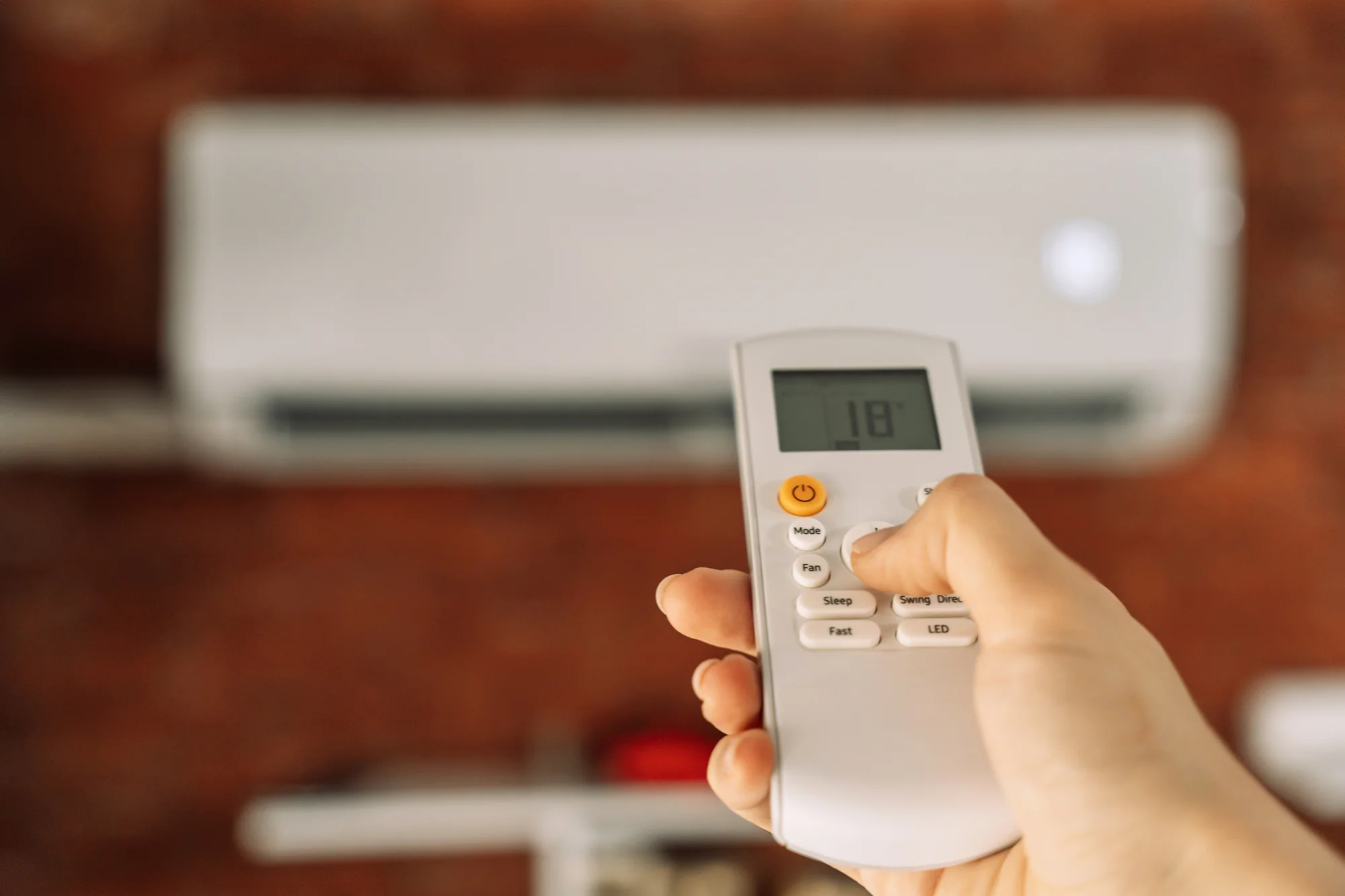The Filipino spirit is defined by a powerful blend of resilience and resourcefulness. We have a word for it: diskarte. It’s that clever, can-do attitude we apply to everything from navigating EDSA traffic to fixing a leaky faucet. So, when our trusty aircon starts to struggle against the Manila heat, our first instinct is often to apply that same diskarte and try to clean it ourselves. Armed with a basahan (rag), a screwdriver, and a healthy dose of confidence, we get to work.
While this DIY spirit is admirable, an air conditioner is a far more delicate and complex piece of machinery than it appears. Some of our most common, well-intentioned cleaning methods can, unfortunately, do more harm than good. These small mistakes can lead to bigger problems: reduced cooling, higher Meralco bills, serious damage to the unit, and even safety hazards.
This isn’t about discouraging the DIY approach. It’s about leveling up our diskarte with the right knowledge. Let’s look at the seven most common mistakes many Pinoys make when cleaning their aircon and learn the safer, more effective ways to keep our homes cool.
Mistake #1: The “Punasan Lang, Okay Na” Approach
(The Wipe-Down Only Method)
What It Looks Like: It’s Saturday morning, and you decide it’s time to “clean” the aircon. You grab a damp cloth, maybe some all-purpose cleaner, and meticulously wipe down the front panel and the vents. You slide out the filter, give it a quick rinse under the faucet, shake it out, and pop it back in. The unit looks shiny and new on the outside. Job done.
Why It’s a Problem: This is the most common mistake of all. While cleaning the filter and casing is a crucial first step, it’s only about 10% of the job. The real enemies of your aircon—thick layers of grime, sticky dust, and burgeoning colonies of mold and bacteria—live deep inside, on components you can’t see. The evaporator coils (the radiator-like fins behind the filter) and the cylindrical blower wheel (the fan that pushes the air out) are where the real filth accumulates. A “punasan lang” cleaning leaves this internal sludge untouched, meaning your aircon is still circulating dirty air and struggling to breathe. It’s like only brushing the very front of your teeth and ignoring the rest.
The Better Diskarte: Treat filter cleaning as a frequent, light task (every 2-4 weeks) and the wipe-down as simple housekeeping. Understand that this is not a substitute for a real, internal clean. The goal of a proper cleaning is to wash the coils and the blower, which requires more than just a rag.
Mistake #2: Using Any ‘Panlinis’ You Can Find
(Using the Wrong Cleaning Agents)
What It Looks Like: In the spirit of using what’s available, we often grab whatever is under the kitchen sink. A squirt of Joy dishwashing liquid in a bucket of water, a splash of Zonrox bleach to “kill germs,” or a heavy dose of a harsh all-purpose cleaner seems like a good idea. More bubbles and a stronger smell must mean it’s cleaner, right?
Why It’s a Problem: This is incredibly damaging. The delicate fins on your aircon’s coils are made of aluminum. Harsh, acidic, or highly alkaline cleaners (like bleach) can corrode this soft metal, slowly eating it away and reducing its ability to transfer heat. Dishwashing soap, on the other hand, leaves behind a sticky residue that can attract even more dust and dirt in the long run, making your problem worse. These chemicals can also damage the unit’s plastic components and potentially harm the fan motor’s protective coating.
The Better Diskarte: For light DIY cleaning of coils, plain water is often sufficient. If you need more cleaning power, you can use a heavily diluted solution of a gentle, pH-neutral soap. For a true deep clean, it’s best to use a dedicated, non-acidic aircon coil cleaner, which is specially formulated to foam up and dissolve grime without corroding the aluminum. When in doubt, water and a soft brush are your safest bet.
Mistake #3: The Full-Force Garden Hose Blast
What It Looks Like: After pulling out a window unit, the goal is to get the caked-on dirt off the coils. The quickest way? Grab the garden hose and blast it on the highest pressure setting. It’s satisfying to see the brown water run off and the metal fins reappear from under the grime.
Why It’s a Problem: Those aluminum fins are shockingly delicate. A high-pressure water stream can easily bend and flatten them. Think of the fins like the pages of a book; for air to pass through, all the pages need to be straight and separate. When the fins are matted down, airflow is severely restricted. The aircon suffocates, its cooling power plummets, and the compressor has to work overtime, leading to overheating and a soaring electricity bill. Furthermore, a powerful blast of water can force moisture into the sensitive electronic control panel or the sealed fan motor, leading to a catastrophic short circuit.
The Better Diskarte: Water is good, but pressure is the enemy. Use a garden hose on a “shower” or “mist” setting. Always spray the water in the opposite direction of the normal airflow. For the indoor coils, this means spraying from the inside out. This pushes the dirt out the way it came in, rather than driving it deeper into the unit.
Mistake #4: The “Bahala Na, Tuyo Na Siguro” Rush
(Not Letting It Dry Completely)
What It Looks Like: You’ve just finished washing the unit. It looks clean, and you’re eager to get it back in the wall and enjoy the cold air. You give it a few shakes, wipe it down with a towel, and decide it’s “dry enough.” You slide it back in, plug it in, and switch it on.
Why It’s a Problem: This is a major safety risk. Water is an excellent conductor of electricity. If moisture is still present in the electrical components, control board, or fan motor windings, plugging it in can cause an immediate short circuit. This can permanently fry the electronics, trip your circuit breaker, or, in the worst-case scenario, create a risk of electrical shock or fire. Even if it doesn’t short out immediately, trapped moisture will lead to rust and corrosion on internal screws and metal parts, shortening the unit’s lifespan.
The Better Diskarte: Patience is a virtue. After a thorough washing, let the unit air-dry completely. Place it in a shady, well-ventilated area (a garage or covered patio is perfect) for at least 24 hours. Use a fan to circulate air around it to speed up the process. Do not rush this step. The cost of a new control board (or a new aircon) is far greater than the inconvenience of waiting one more day.
Mistake #5: Using a Screwdriver or Matigas na Brush to Scrape Dirt
(Poking and Damaging the Coils)
What It Looks Like: You encounter a particularly stubborn patch of caked-on grime between the fins. A soft brush isn’t cutting it. You grab the nearest tool—a flathead screwdriver, a BBQ skewer, or an old, hard-bristled brush (sepilyo)—and start scraping and poking to dislodge the dirt.
Why It’s a Problem: This is a guaranteed way to damage your aircon. As mentioned before, the aluminum fins are extremely fragile. Any hard tool will bend, crush, and deform them, causing permanent blockages in airflow. You might remove the dirt, but you’ll replace it with a physical barrier that is even worse for the unit’s efficiency.
The Better Diskarte: Never use a hard tool on the coils. For stubborn dirt, use a soft-bristled paintbrush or an old toothbrush and gentle, patient strokes. A spray bottle of water can help loosen the grime. If fins are already bent, professionals use a special tool called a “fin comb” to carefully straighten them. If you don’t have one, it’s better to leave slightly bent fins alone than to make them worse by poking them with a random object.
Mistake #6: Forgetting About the Outdoor Unit (For Split Types)
What It Looks Like: Your focus is entirely on the indoor unit of your split-type aircon. It’s the part you see, the part that blows the air. The outdoor unit, sitting on the balcony or mounted on the wall outside, is out of sight and out of mind. It gets covered in dust, leaves, and pollution, but it’s rarely touched.
Why It’s a Problem: The outdoor unit (the condenser) has a critically important job: it releases all the heat that was removed from your room. Its coils and fan work together to dissipate this heat into the atmosphere. If the condenser coils are clogged with a thick blanket of dirt, they can’t release heat efficiently. The compressor is then forced to work much harder to try and cool the refrigerant, leading to massive energy consumption and extreme strain that can cause it to fail prematurely.
The Better Diskarte: The outdoor unit needs cleaning too! At a minimum, you should be shutting off the power and gently hosing it down (again, on a shower setting) every few months to remove loose dust and debris. A professional service will include a deep chemical cleaning of the outdoor coils as part of their standard split-type service package.
Mistake #7: Thinking DIY Cleaning is Always Enough
What It Looks Like: You’re a diligent DIYer. You clean your filter every month and even take the unit out for a wash once a year. You think you’ve got it covered and that calling a professional is just a waste of money.
Why It’s a Problem: Even the best DIY cleaning can’t replicate what a professional service can do. A technician has the tools and training to:
- Safely dismantle the unit to access parts you can’t, like the internal blower wheel.
- Use a calibrated pressure washer that cleans effectively without damaging fins.
- Apply the correct chemical cleaners that dissolve grime without corrosion.
- Check refrigerant levels and electrical components, spotting potential problems before they become catastrophic failures.
- Thoroughly flush the drain lines to prevent leaks.
The Better Diskarte: Think of it like dental care. You brush your teeth every day (DIY cleaning), but you still go to the dentist for a deep clean and check-up once a year (professional service). Your regular filter cleaning is essential, but you should still budget for a professional aircon deep cleaning annually. This professional service is what resets your aircon to its peak efficiency and catches problems you can’t see.
Conclusion: It’s About Smarter Diskarte
Our Filipino ingenuity is a powerful asset, but it must be guided by the right knowledge. Cleaning an aircon is about more than just making it look good; it’s a crucial task that impacts your comfort, your health, and your household budget.
By avoiding these common mistakes, you’re doing more than just cleaning your aircon correctly. You are protecting your expensive investment, ensuring the air your family breathes is clean, keeping your Meralco bill in check, and guaranteeing that you have a cool sanctuary to come home to after a long, hot day. That is the ultimate, smartest diskarte.




